Ancient Greece, with its rich history, extraordinary artistry, and profound influence on Western civilization, has left a legacy that continues to captivate and inspire.
In this article, we embark on a journey through time to uncover and celebrate 25 of the most remarkable artifacts from the cradle of democracy and philosophy.
From the world-famous Parthenon Marbles to the legendary Mask of Agamemnon, these artifacts offer glimpses into the art, technology, mythology, and culture of a civilization that has left an indelible mark on the world.
Join us as we delve into the treasures of Ancient Greece, each one a testament to the ingenuity and creativity of a bygone era that still resonates with us today.
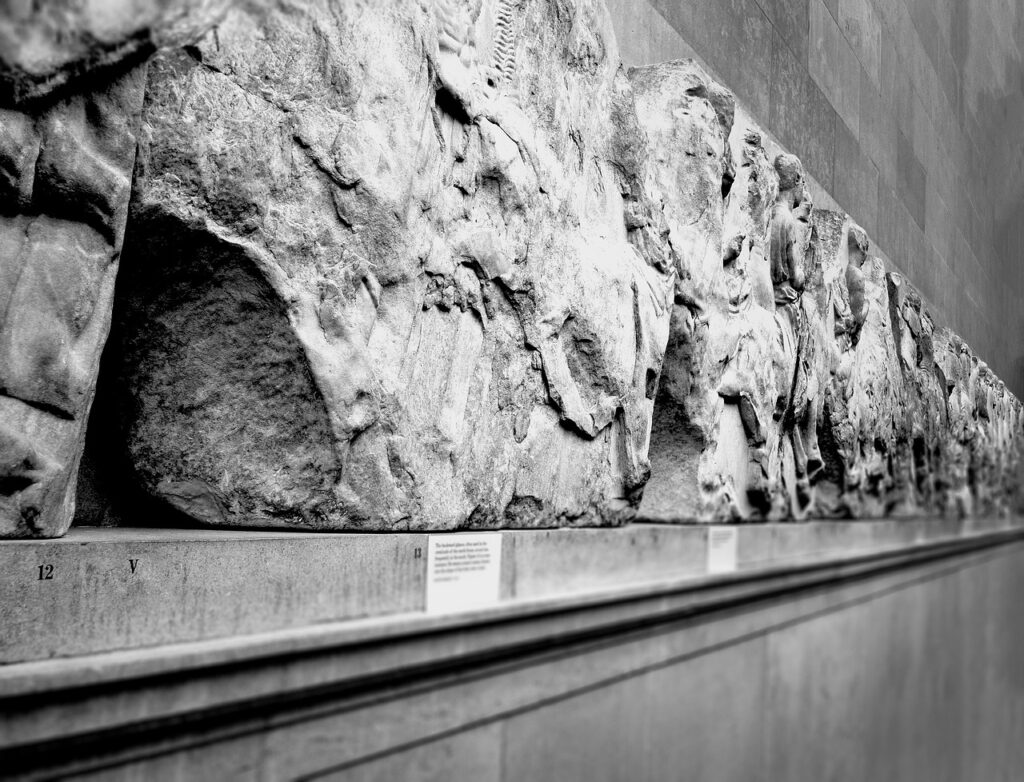
The Parthenon Marbles, also known as the Elgin Marbles, are a collection of classical Greek sculptures and architectural elements originally part of the Parthenon temple in Athens.
These exquisite marbles, made of Pentelicus and Parian marble, were removed from the Parthenon by Lord Elgin in the early 19th century and are now housed in the British Museum in London.
The collection includes metopes, friezes, and pedimental sculptures that depict various mythological and historical scenes, offering a glimpse into the artistic and architectural achievements of ancient Greece.
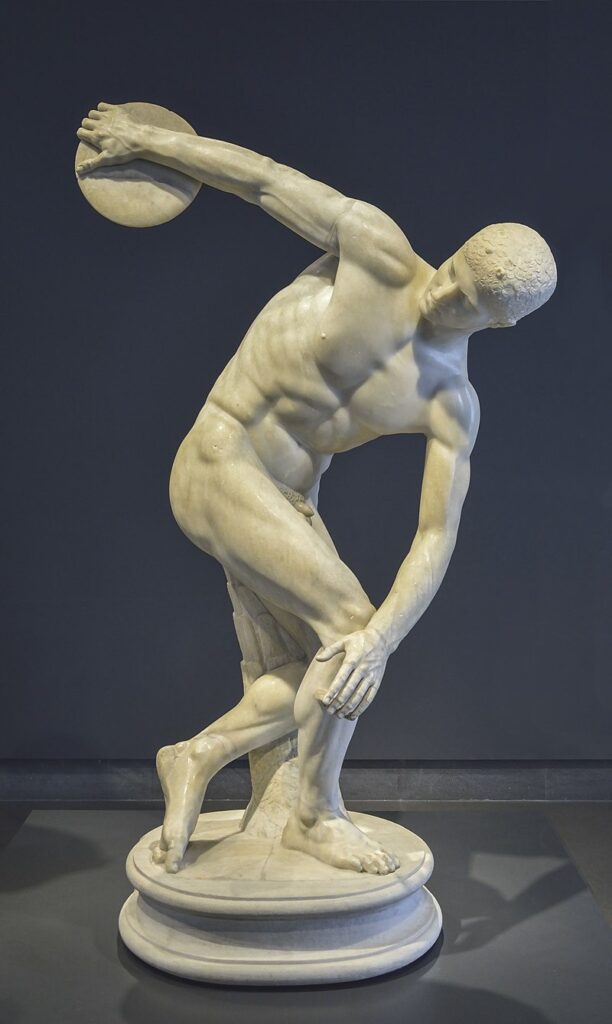
The Discobolus of Myron is a renowned ancient Greek sculpture created by the artist Myron during the 5th century BC. This sculpture captures a moment of intense athletic action as it depicts an athlete in the midst of a discus throw.
The Discobolus embodies the idealized form of the male human body and represents the Greek passion for physical prowess and artistry. It is considered a classic example of Greek classical sculpture and is celebrated for its lifelike representation of motion and anatomy.
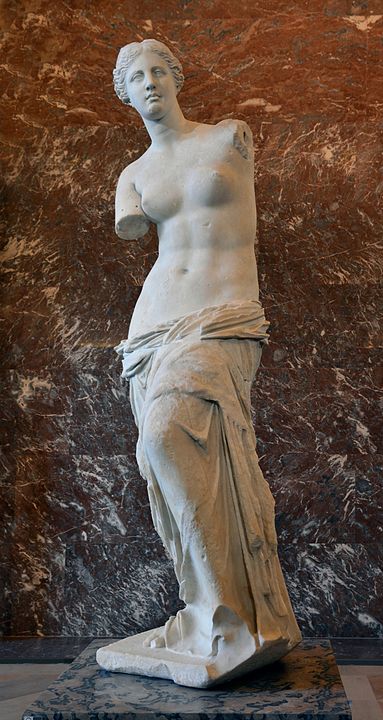
The Venus de Milo is a famous Hellenistic marble sculpture representing Aphrodite, the Greek goddess of love and beauty. Discovered on the island of Milos in 1820, the statue is believed to date back to the 2nd century BC.
The Venus de Milo is celebrated for its graceful and elegant pose, as well as its exquisite drapery. It remains an iconic representation of classical Greek art and has been a source of inspiration for countless artists throughout history.
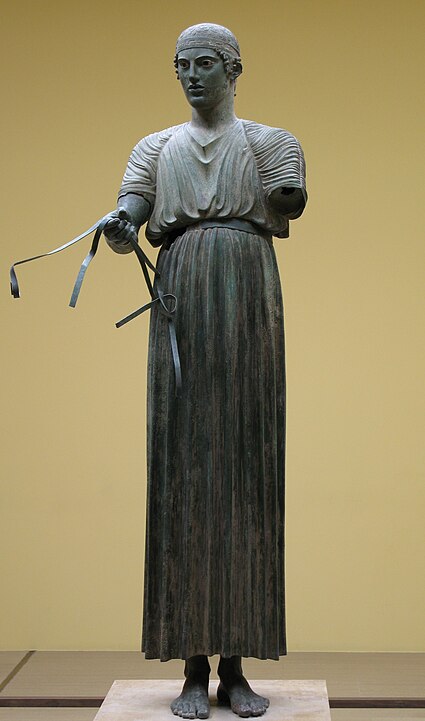
The Charioteer of Delphi is a striking bronze statue that once adorned the Sanctuary of Apollo at Delphi. Created in the early 5th century BC, this statue is a remarkable example of ancient Greek bronze casting.
It depicts a young charioteer who has just won a race, holding the reins of his horses and exuding a sense of calm confidence.
The Charioteer is celebrated for its exceptional craftsmanship and lifelike detail, representing the pinnacle of classical Greek sculptural art.
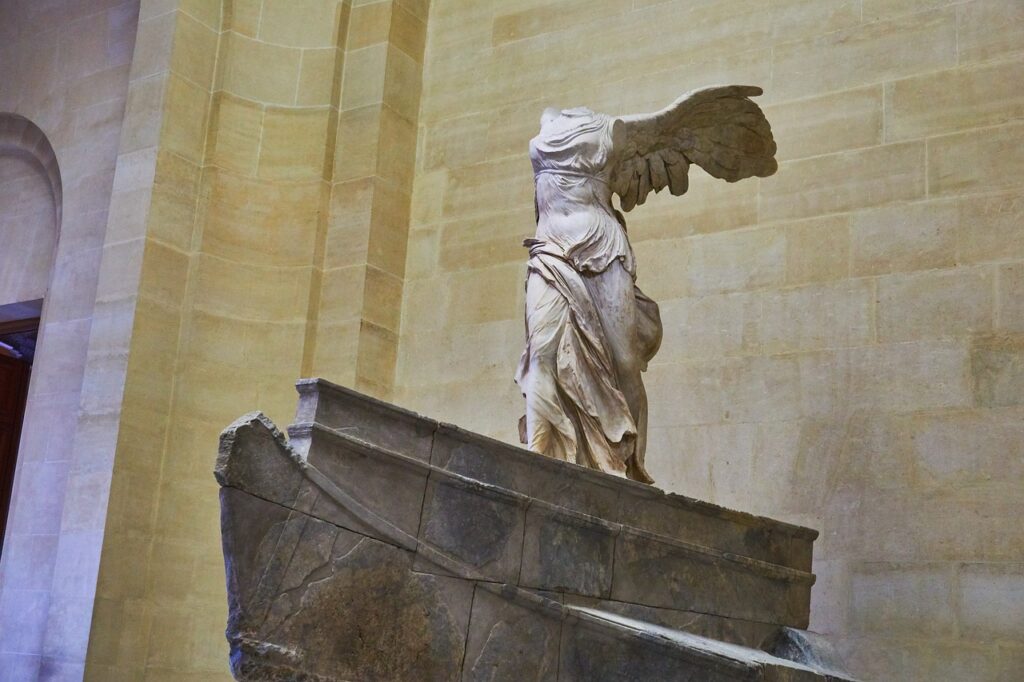
The Winged Victory of Samothrace, also known as Nike of Samothrace, is a striking marble sculpture of the Greek goddess Nike. This masterpiece was created in the 2nd century BC and is believed to commemorate a naval victory.
The sculpture depicts Nike standing on the prow of a ship, her garments billowing in the wind, and her wings spread wide. The Winged Victory is admired for its dynamic composition and the sense of triumph and movement it conveys. It is one of the most iconic and celebrated sculptures from the Hellenistic period.
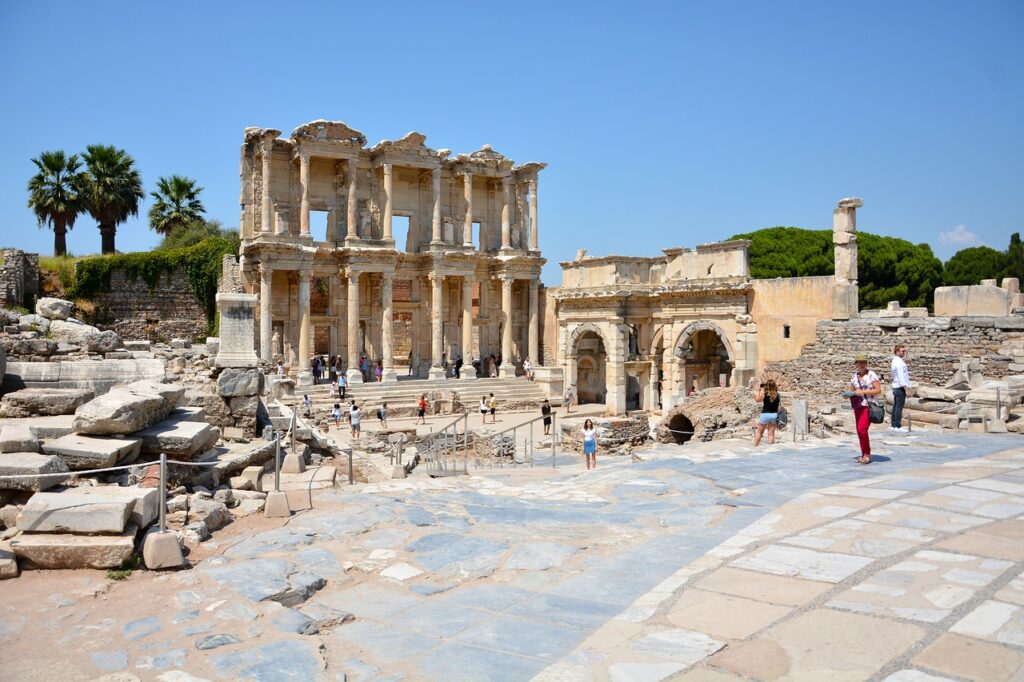
The Temple of Artemis at Ephesus, also known as the Artemesium, was one of the Seven Wonders of the Ancient World. Located in Ephesus (modern-day Selçuk, Turkey), this massive temple was dedicated to Artemis, the Greek goddess of the hunt and fertility.
The temple was a masterpiece of ancient architecture, featuring over 100 columns, intricate sculptures, and impressive craftsmanship. Sadly, the temple was destroyed and rebuilt several times, and today only a few ruins and one reconstructed column remain, but its historical significance endures.
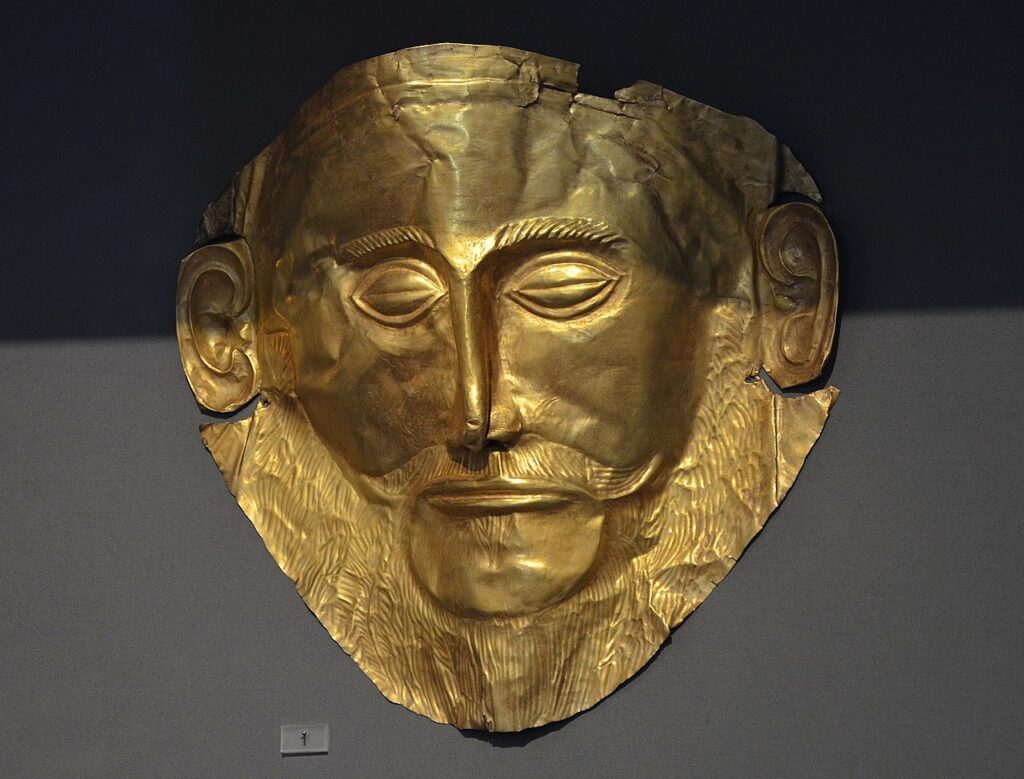
The Mask of Agamemnon is an iconic gold funeral mask discovered at the ancient Mycenaean site of Mycenae in Greece. It is believed to date back to the 16th century BC and is associated with Agamemnon, a mythical Greek king and leader of the Greek forces during the Trojan War.
The mask, with its lifelike facial features and intricate goldwork, has become emblematic of the ancient Mycenaean civilization and the legendary events of Greek mythology.
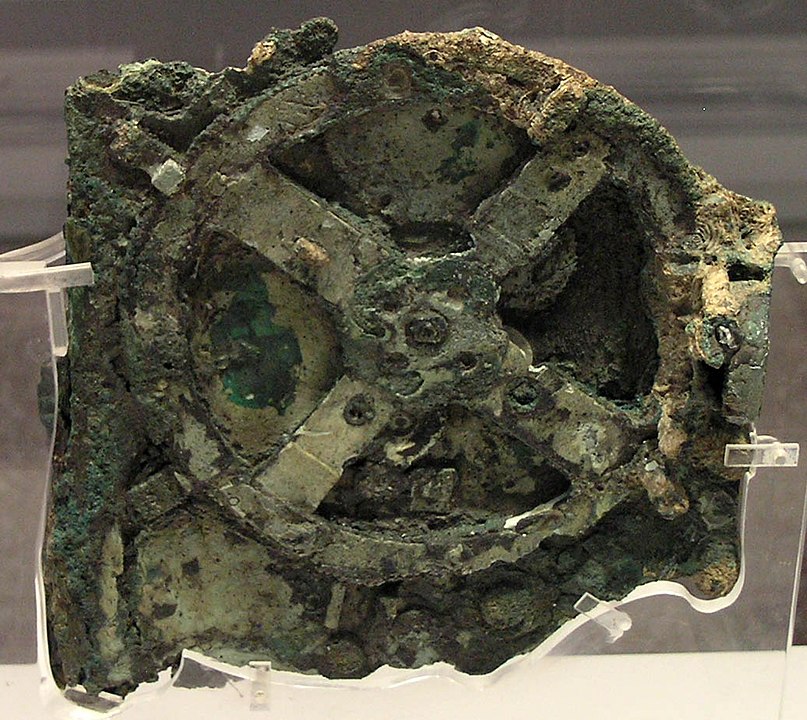
The Antikythera Mechanism is a remarkable ancient Greek analog computer. Discovered in the Antikythera shipwreck off the coast of the Greek island of Antikythera, this device is believed to date back to around 100 BC. It is considered one of the most important archaeological finds of the 20th century.
The mechanism was used for predicting astronomical positions and eclipses and stands as a testament to the advanced knowledge of ancient Greek astronomers and engineers.
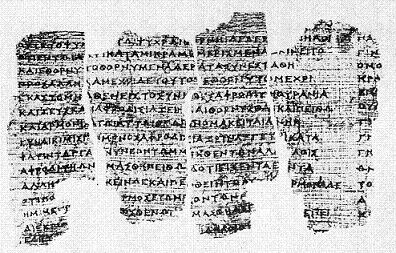
The Derveni Papyrus is an ancient Greek philosophical text found in 1962 near Thessaloniki, Greece. It is a scroll that dates back to the 4th century BC and contains a philosophical treatise exploring the religious and cosmological beliefs of the time.
This manuscript provides valuable insights into the philosophical and religious ideas of the ancient Greeks, shedding light on their intellectual pursuits and worldviews.
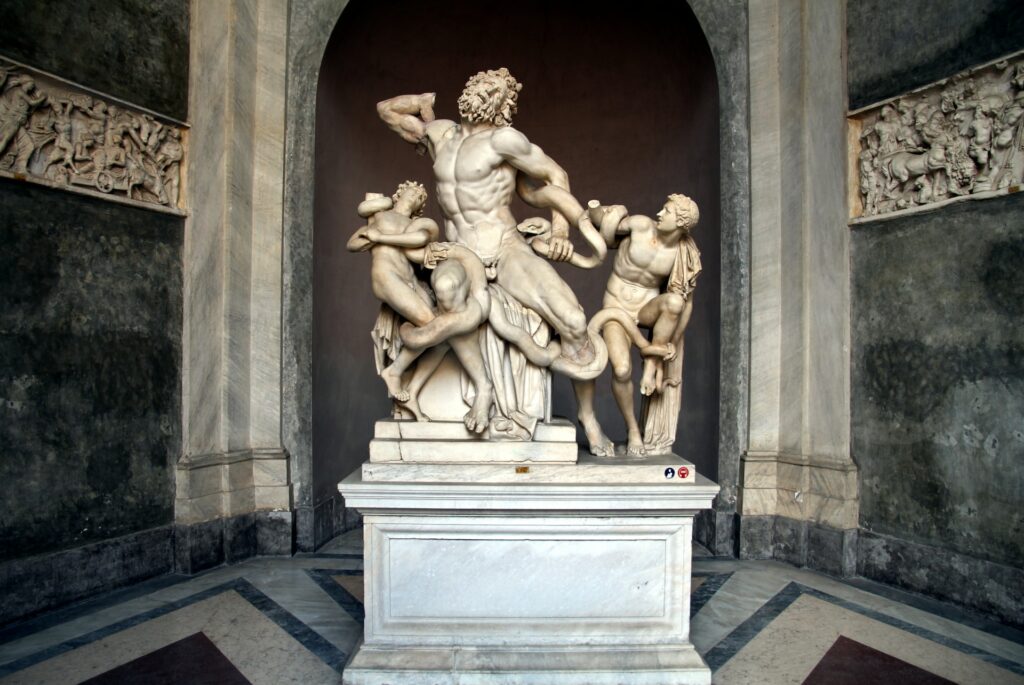
The Laocoon Group is a striking sculpture depicting the Trojan priest Laocoon and his sons being strangled by sea serpents. Discovered in Rome in 1506, this ancient Greek sculpture is believed to have been created in the early 1st century BC.
It is celebrated for its emotional intensity and the intricate detail of the intertwined figures. The Laocoon Group captures a dramatic moment from Greek mythology, symbolizing the conflict and suffering of the Trojan War.
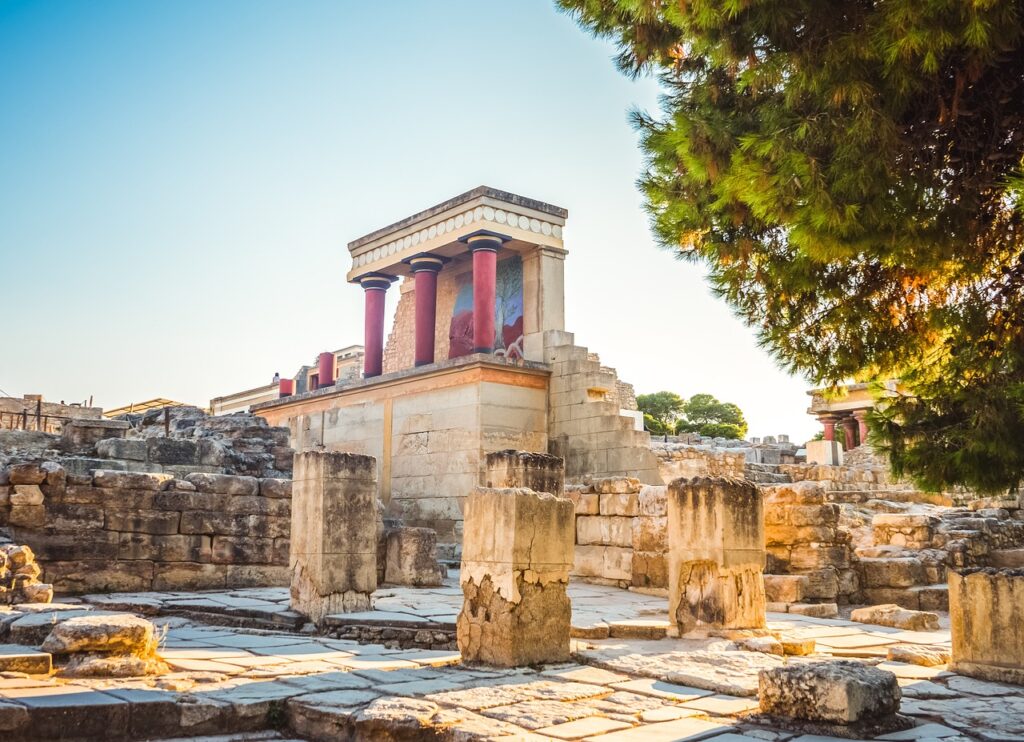
The Palace of Knossos is the largest archaeological site associated with the Minoan civilization on the island of Crete. This palace complex is known for its intricate architecture, frescoes, and labyrinthine layout.
It is linked to the legend of the Minotaur, a mythical creature, and the labyrinth, as described in Greek mythology. The palace’s ruins provide a window into the advanced Minoan culture and their architectural achievements.
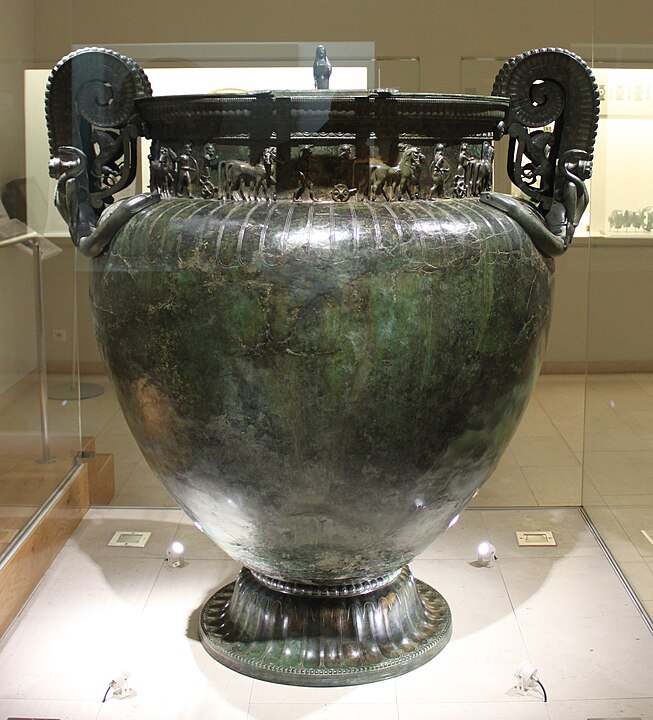
The Krater of Vix is an ancient Greek wine-mixing vessel found in Vix, France. This large bronze vessel is known for its exquisite Greek artistry and intricate decoration.
It dates back to the 6th century BC and is evidence of the extensive trade and cultural exchanges between ancient Greece and other regions in Europe.
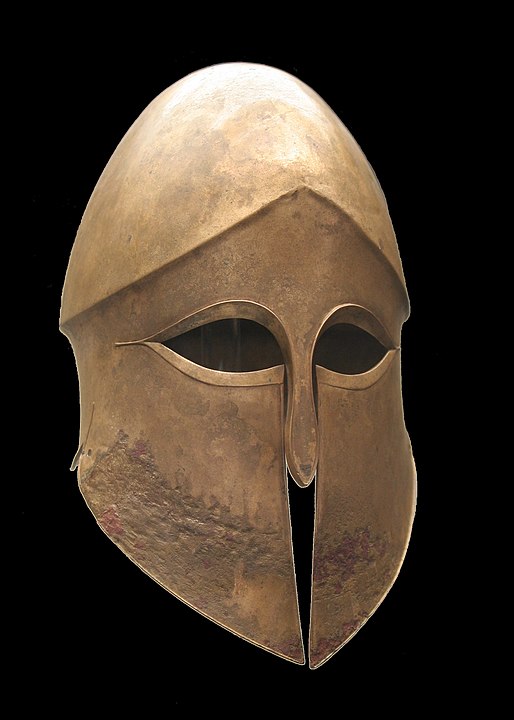
The Corinthian helmet is a distinctive style of ancient Greek helmet known for its rounded shape and elaborate cheek guards. These helmets were widely used by Greek warriors, particularly during the Archaic and Classical periods.
The design of the Corinthian helmet not only offered protection but also conveyed a sense of unity and identity among Greek soldiers.
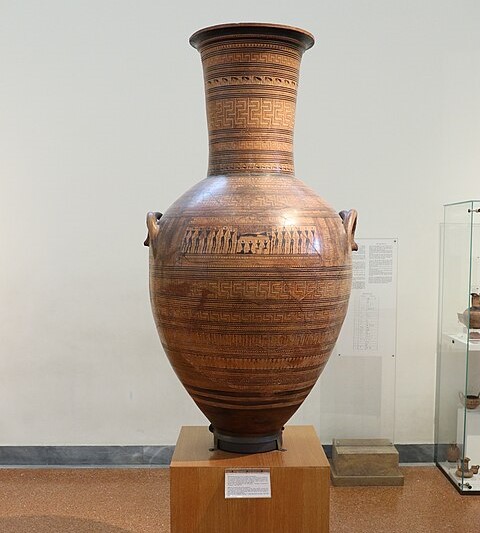
The Dipylon Amphora is an ancient Greek vase that provides valuable insights into the artistic techniques of ancient Athens. Created around 750 BC, it features intricate geometric designs and is associated with the funerary practices of the time, often used as grave markers.
The Dipylon Amphora represents the significance of pottery in ancient Greek culture, both for practical and artistic purposes.
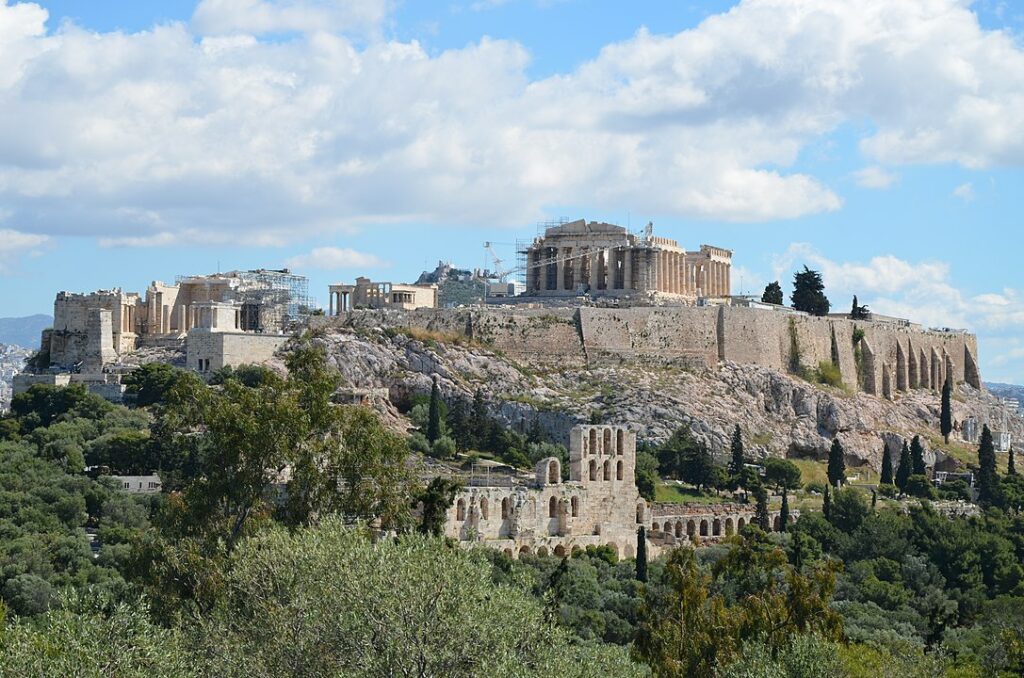
The Acropolis of Athens is a prominent hilltop complex in Athens, Greece, featuring several ancient buildings and temples. The most famous structure on the Acropolis is the Parthenon, a temple dedicated to the goddess Athena.
The Acropolis is a symbol of ancient Greek architecture, art, and the enduring legacy of the city of Athens.
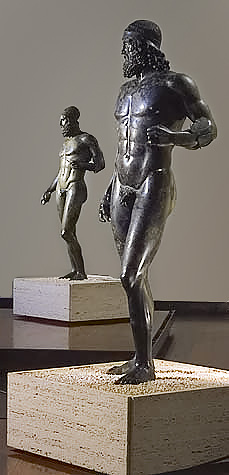
The Riace Bronzes are two full-sized bronze statues discovered off the coast of Italy in 1972. These statues are believed to represent warriors or heroes from ancient Greece and are thought to date back to the 5th century BC.
They are remarkable examples of ancient bronze sculpture, showcasing the exquisite skill of Greek artists and the attention to detail in their work.
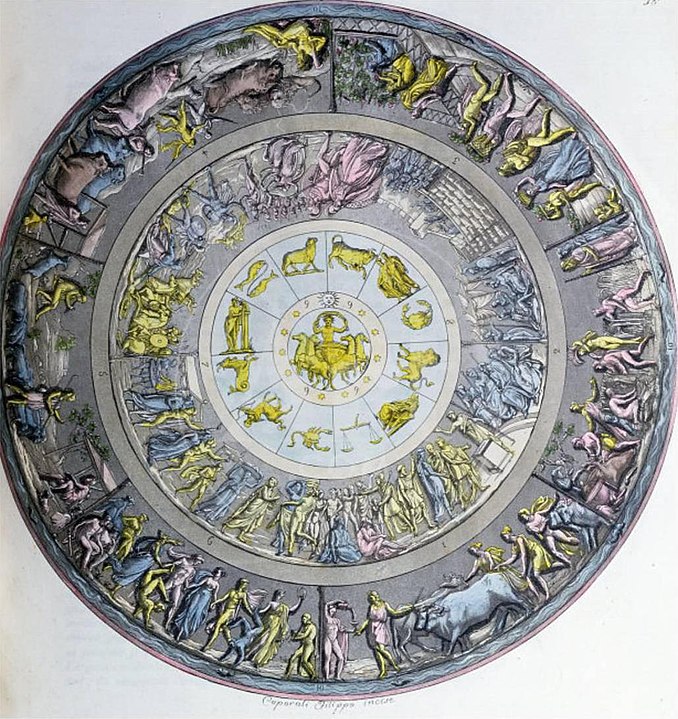
The Shield of Achilles is a legendary artifact described in Homer’s “Iliad.” According to the epic poem, Hephaestus, the Greek god of blacksmiths and craftsmen, forged a magnificent shield for the hero Achilles.
The shield featured intricate scenes from Greek mythology and daily life. Though the shield itself is mythical, it symbolizes the rich storytelling and artistic traditions of ancient Greece.
Knucklebone dice, also known as astragaloi, were used in ancient Greece for various games and divination practices.
These dice were typically made from the knucklebones of sheep or goats and were marked with different symbols or numbers.
The use of knucklebone dice offers insights into the leisure activities and superstitions of the ancient Greeks.
The Mask of Dionysus is a theater mask representing Dionysus, the Greek god of wine, theater, and revelry. Masks like this one were used in ancient Greek theater to represent various characters and emotions.
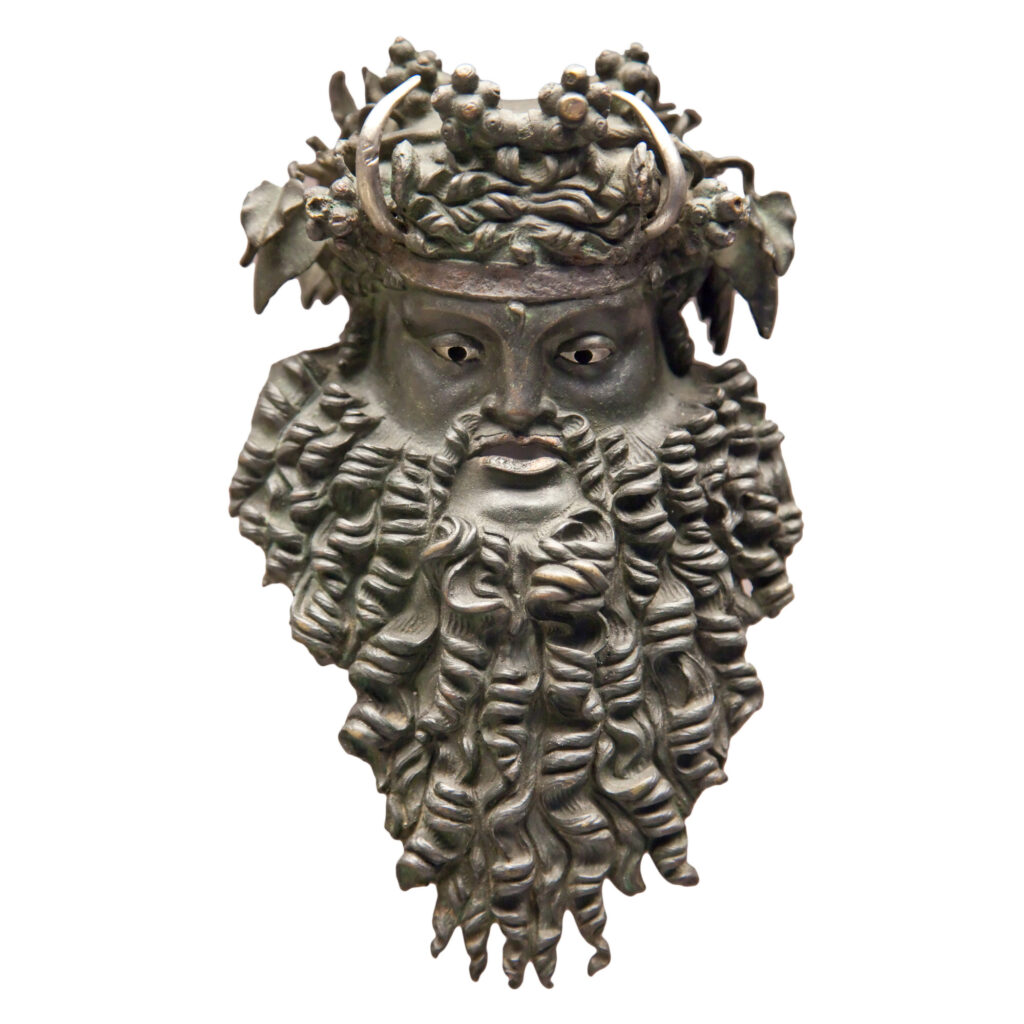
Theatrical performances were an integral part of Greek culture, and masks like the Mask of Dionysus played a significant role in these productions.
The Tomb of Philip II is the burial site of Philip II of Macedon, the father of Alexander the Great. Located in Vergina, Greece, this tomb is a testament to the grandeur and wealth of the Macedonian royal family.
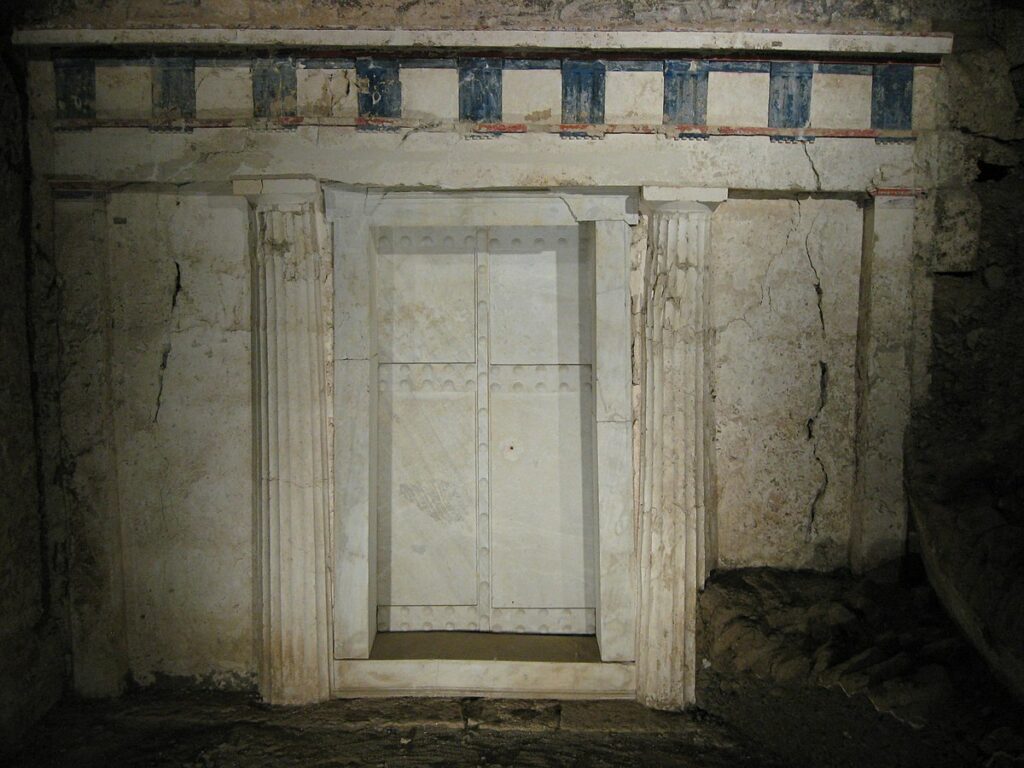
The tomb’s interior features intricate frescoes and burial artifacts, shedding light on the culture and customs of the Macedonian elite.
Hoplite armor represents the equipment worn by hoplites, heavily armed foot soldiers in ancient Greece. A typical hoplite’s armor included a bronze helmet, breastplate, greaves, a large round shield, and a long spear.
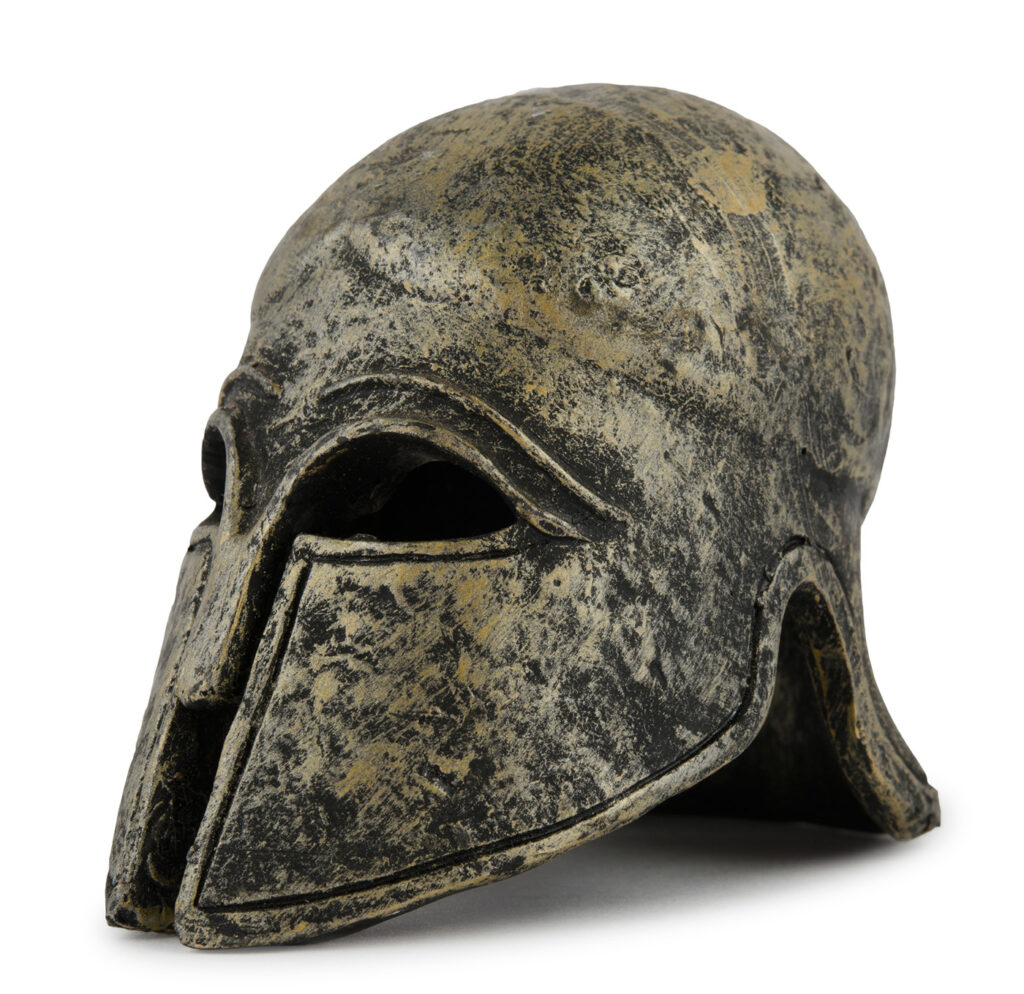
This equipment played a crucial role in ancient Greek warfare, particularly during the Classical period, and is a symbol of the citizen-soldier tradition in Greek city-states.
The Hekatompedon Inscription is an ancient Greek inscription found on the Acropolis of Athens. It provides historical and architectural information about the construction of the Parthenon, the iconic temple dedicated to the goddess Athena.
This inscription sheds light on the building techniques and dedication of structures on the Acropolis.
The Pythia’s Tripod was a sacred offering at the Temple of Apollo in Delphi. The Pythia, also known as the Oracle of Delphi, was a priestess who provided prophecies and guidance to visitors seeking divine insight.
The tripod played a crucial role in the oracle’s rituals and divination practices, making it an important artifact in the religious life of ancient Greece.
The Orestes and Electra Vase is a red-figure vase that depicts scenes from the tragic play “Electra” by the ancient Greek playwright Euripides.
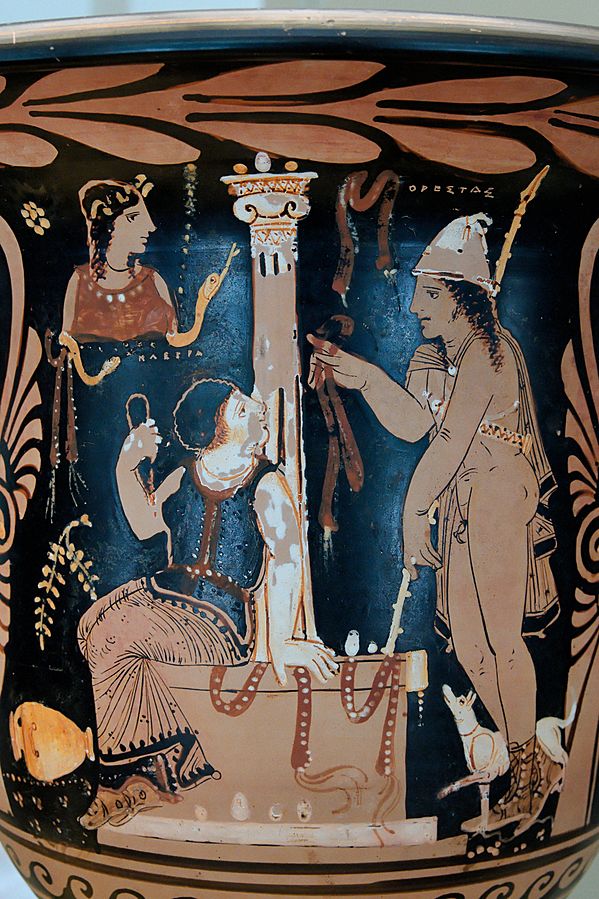
It features characters from Greek mythology, including Electra and Orestes, and offers a visual representation of the dramatic arts and storytelling in ancient Greece.
As we conclude our exploration of the 25 remarkable artifacts from Ancient Greece, we are reminded of the enduring significance of this extraordinary civilization. Ancient Greece’s contributions to art, philosophy, science, and culture continue to shape our world in ways both profound and subtle.
These artifacts, each with its unique story and purpose, offer us windows into the past and connect us to a heritage that has left an indelible mark on humanity.
From the majestic Parthenon Marbles to the intricate Antikythera Mechanism, we have witnessed the genius and creativity of the ancient Greeks. Their artistry, mythology, and technological prowess continue to inspire and inform the modern world.
By preserving and cherishing these artifacts, we ensure that the legacy of Ancient Greece endures, offering us not only a glimpse into the past but a guide for the future. Their enduring beauty and significance serve as a testament to the timeless appeal of Greece’s cultural and intellectual achievements.
It is a legacy worth celebrating and protecting, as it remains a beacon of inspiration for generations to come.
**Please note that this post may contain affiliate links. When booking through one of our links, we earn a small kickback at no extra cost to you and it’s a big help to keep the site up and running.